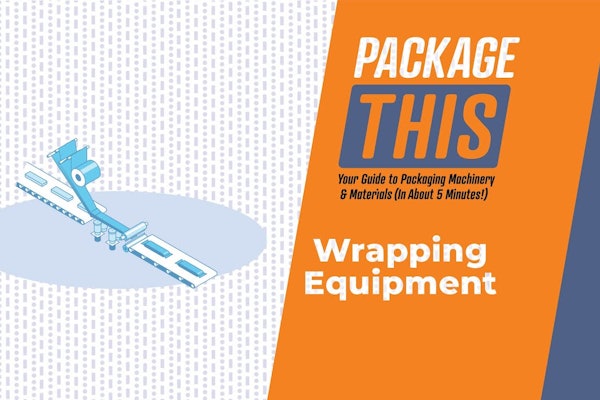
We sat down recently with PMMI Director of Technical Services Fred Hayes to catch up on the ANSI/PMMI B155.1-2011 standard. The requirements of this standard apply to new, modified, or rebuilt industrial and commercial packaging and packaging-related converting machinery.
Sean Riley:
Let’s start at the beginning with the who, what, when, where, and why of ANSI/PMMI B155.1-2011.
Fred Hayes:
OSHA came into effect in 1970, and their plan was to write a standard for every industry. The members of PMMI didn’t think that OSHA had enough knowledge about packaging machinery safety to write an effective standard. PMMI became an ANSI-accredited standards developing organization, so they could still develop their own standards for packaging machinery. The first standard PMMI did was approved in 1973. It was revised in 1979 and then again in 1986, 1994, 2006, and 2011.
With five changes over the years, were they all minimal changes as a gradual evolution or revisions precipitated by new technology?
The major change came in 2006. Previous to that, the standard was what we describe as a “prescriptive standard.” It said, “these types of machines have these hazards. Therefore, here is the safeguarding you should put on the machine to reduce risk.” In 2006 and to a lesser extent 2011, the standard significantly changed as it began informing users on how to do a proper risk assessment. The OEMs define a process and then supply customers the machinery. If the customer follows the process, they will get good results.
Isn’t the expression “acceptable risk” somewhat subjective depending on which machine builder is using it?
Correct. The standard does not define what acceptable risk is. That is up to the supplier of the machinery to determine what they feel is acceptable risk. There are some end-users who define what they feel is acceptable risk. Normally, at least in today’s world, many of the purchasers of the machinery want a copy of the risk assessment showing the hazards the standard identified, and the risk reduction measures employed. Then the user can determine if they feel that is acceptable risk for their company. The goal for both sides is to accept the risk.
What would be an example of an end-user not feeling comfortable with a supplier’s acceptable risk?
Some end users may say, for example, “Well, I like to have light curtains instead of opening barrier guards.” That particular user may feel that for his operation, that’s the type of risk reduction measure that he wants regardless of the cost of curtains. So, it isn’t that the supplier of the machinery didn’t supply a machine that offered acceptable risk, it is just that the user of the equipment said, “I want a different style of guarding for whatever reason.”
So the standard defines what it is, and to some degree why it is important?
In the United States, there is no law that tells a machinery builder or a supplier of machinery how to build the machine. Now, in the European Union, they have directive 2006/42/EC. That is the machinery directive that tells the machinery builder what requirements he has to meet in terms of what they call, “the essential health and safety requirements.” In turn, the machinery builders and suppliers sign a declaration of conformity stating he has met the essential health and safety requirements of the machinery directive. There is no equivalent law in the United States.
Why would the U.S. not have a law?
In Europe, tort law is very weak, and it is not used very much at all. In the United States, we have an aggressive legal system that serves as a driving force for the machinery builders to build a safe product. There is no law that says you have to use the standard. However, there is a catch. If you get involved in product liability litigation, the measuring stick under tort law that determines if your machine met the standards of the industry for packaging machinery is going to be the ANSI/PMMI B155.1-2011 standard. So even though there is no legal requirement to use the standard, it is the de facto measuring stick that will be used to judge your equipment under tort law.
It is not mandatory, but it’s a great idea as the measuring stick. Explain why the standard is important for the end user who is purchasing the equipment?
Consumer packaged goods companies are large global companies. The great majority of them place a lot of value on having safe workplaces. They follow the standard because they feel they have a legal obligation under the general duty clause of OSHA to provide a safe workplace. Most of them also feel they have a moral obligation to makes sure that everybody that comes to work goes home whole. They want to buy equipment and put together systems for making products that are safe for their employees to use. One of the easiest ways to help them to do this is if the packaging machinery manufacturers are building to the ANSI-B155.1 standard, and they are doing a risk assessment.
Would a small-time end user be aware of risk assessment documentation?
I would say that most end users, large or small, are certainly familiar with the process because of the focus that OSHA has on what’s called job safety analysis. A job safety analysis is going to affect a risk assessment of a particular job that an employee is doing. So they look at what the employee is doing, how they interface with the machinery, what are the risks and in turn, what are the risk reduction measures that their operating procedures could put in place. I don’t know if they call it a risk assessment process at that point, but a job safety analysis is, in fact, a small risk assessment of a specific task. So, in the workplace today, job safety analysis is a pretty standard thing that’s been around for OSHA for a number of years.
As a machine builder how do I know that I am meeting the standard?
The risk assessment process starts off with defining the scope of what we are doing. Let’s assume we are doing a complete machine. You go through the machine, and you look at what the worker is doing, and how he interfaces with the machine and his exposure to hazards. You look at energy sources, electrical, pneumatic, mechanical, thermal, heat, etc. You look at abnormal events. You look at the life cycle of the machine once the customer accepts it. He is going to start it up; he is going to run the machine; he is going to change the machine over; he is going to do maintenance on the machine; and he is going to clean the machine. Each one of the parts of the lifecycle has different hazards associated with the use of the equipment.
So lifecycle, in this case, does not mean the actual life of the machine, but its usage from start through cleaning?
For example, the people on third shift clean the machines. Let’s say they are the only ones exposed to the chemicals used for cleaning, with the guard open, and the machine running at a certain speed for a proper hose down. The OEM goes through each one of those hazards and scores how much risk they think is there, how severe is the injury you could get and what’s the probability the injury could occur. After applying a risk reduction measure, the OEM scores the risk again, showing, hopefully, that they have reduced the risk to an acceptable level. So on a medium sized machine, you may have a list of 150 task hazard pairs and hazards you have identified and evaluated. Otherwise, you get a group of people who now start asking “what if.” There is no end to “what if?”























